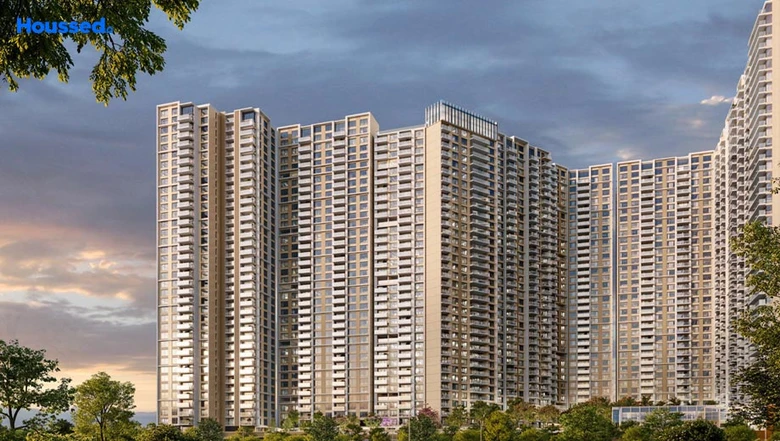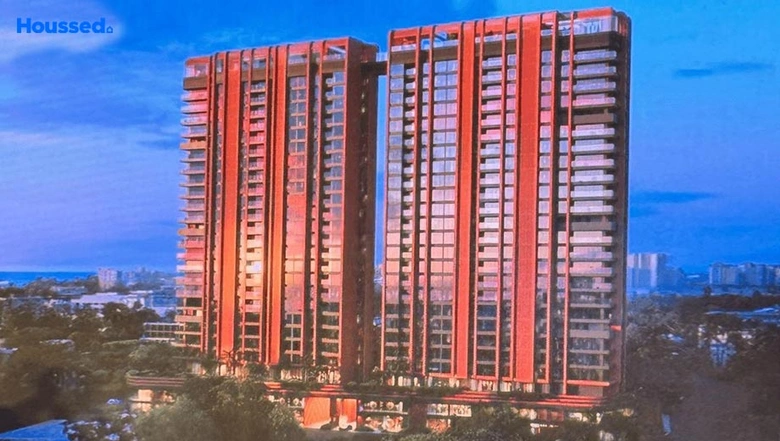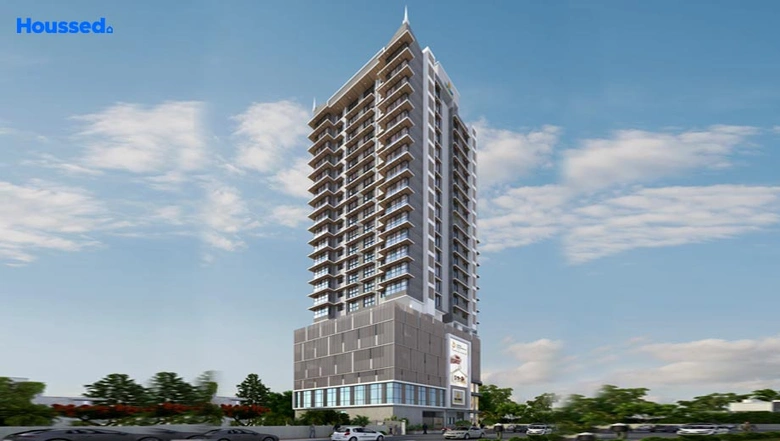Tips to Choose Earthquake Proof Buildings

Buying a house is a challenging task. You need to be careful about earthquake-prone zones before purchasing a property. Let's learn more.
If we talk about the Earth's most destructive forces, Earthquakes will be considered one — seismic waves that are generated throughout the ground can cause several deaths and destroy buildings and result in enormous loss of money for the losses caused and repair of the destroyed buildings, earthquake proof buildings are constructed To provide greater resistance to seismic forces during seismic activity
The chances of buildings collapsing during an earthquake have risen a lot with the growing cities. Owing to this factor, engineers worldwide have now started to be more focused on the construction of earthquake proof buildings, which has resulted in the development of a new engineering field known as ''Earthquake Engineering.
Factors leading to High Casualty During Earthquakes
- Due to the rapidly growing urbanisation and the rising prices of land, numerous multi-storied buildings are being built.
- The code is not being followed mandatorily.
- Municipal bye-laws govern the such type of construction.
- Seismic provisions are not being assimilated.
- The enforcement of elaborated checks in proper ways needs to be followed.
- Even for simple ordinary designs, no checks are conducted.
Impact of Earthquake on the Buildings
Whenever an earthquake occurs, the energy generated by force moves through the ground and shakes it in waves. Similarly, how a ripple is formed when you throw a stone into a pond; it gets spread out in multiple directions from the source like a ripple in the water. The area closest to the centre is where the biggest and strongest force of the earthquake lies.
A building will tend to shake around one specific frequency known as its fundamental, natural, or frequency during an earthquake. The frequency of the building and ground is considered to be in resonance when the ground shares the same natural frequency as the building. The local geology and building techniques are prime determiners other than the earthquake's magnitude of the damage and devastation that an earthquake will cause.
Determinants of Earthquake
Base Isolation
A series of bearing pads are placed between the building and the building's foundation to support the base-isolated structure. Base isolation bearing pads of different varieties have now been developed. The bearing is very flexible in the horizontal direction but strong and stiff in the vertical direction.
Condition of the Ground or Soil
The effect of the earthquake vibrations is amplified in areas where the ground is soft, mostly on sediments such as those in flood plains, reclaimed land or former landfill. The amount of shaking is limited in the harder rock areas.
Construction and Structure of the Building
The structure will stay steady while the isolators will vibrate during an earthquake, aiding in absorbing the seismic waves and preventing them from travelling through the rest of the building. In the case of poor construction technique, where the floor and slab walls are not tied together properly, for instance, it makes the building far more vulnerable to earthquake damage. In contrast, buildings survive much better if the bricks are held properly with the correct mortar.
Constructions must reorganise the energy that travels through them during earthquakes to resist crashes. For the construction of earthquake proof buildings, you can use cross braces and shear walls. In strengthening a building, moment-resisting frames and diaphragms also play a crucial role.
Materials Used for Construction
In the situation where the building collapses, the occupants are most likely to survive if:
- the walls and roof of the building are constructed with lightweight materials rather than heavy ones;
- rubble-masonry buildings, or brick buildings with low-quality mortar, do not withstand earthquakes well,
- wooden or steel-framed buildings survive much better because they get adequately braced.
Using sturdy materials to construct earthquake-proof buildings is crucial, and they can prevent the disruption of the building's structure by preventing shockwaves. Therefore, shock absorbers, pendulums, and invisibility cloaks are very important. Depending upon the material used for building construction, they aid a lot in redirecting the force from the earthquake.
Design of the Building
When it comes to earthquake resistance, the main difference is made by the structural makeup of a building. The building must be capable of withstanding and dispersing any energy that could move through it.
Furthermore, there are options for building design. When the frequency of the seismic waves is close to the natural frequency of vibration of the building, the buildings usually shake due to an effect known as resonance.
Buildings must redistribute the seismic forces that travel through them during an earthquake to withstand a potential collapse. For the reinforcement of a building, shear walls, cross braces, diaphragms, and moment-resisting frames are crucial. They provide more flexibility and help support compression and tension.
Frequency of Resonance
The height of the building is the determiner of the resonant frequency. Low-frequency shaking might result in tall buildings shaking intensely, while it might have little or no effect on low-rise buildings in the vicinity, even though the effects may be reversed if the vibration frequency is high.
The upper stories of tall buildings usually suffer the most damage due to the motion of the earthquake being greater there. The other most common damage cause is collisions with adjacent buildings, known as 'pounding'.
Guidelines You Need to Follow While House Hunting
- Feel free to enquire about seismic safety with the developer. Maintaining written records of the questions asked and the answers required. If something goes wrong, it will provide legitimate proof.
- Beware of claims like "the structure is developed following Zone 5 or Zone 4 standards." The seismic performance of a structure is discussed in terms of earthquake resistance categories and seismic hazard description zones.
- There are four different kinds of structures that are quake-resistant. Class A and B are operable, and class C is life-safe. Class D is prone to collapse, and Class D is immediately inhabited. The highest and lowest classes are A and D, respectively. Residents must be aware of the classification of their building.
- Class D, or "Collapse Prevention" requirements, are used in almost all Indian construction projects. After an earthquake, these structures would suffer catastrophic damage and become uninhabitable or irreparable.
- Class B structures are typically 350 rupees per square foot more expensive than class D structures. Class B structures won't sustain significant structural harm and are safe to use. Even following a large earthquake.
Crucial Tips on Choosing Earthquake Proof Buildings
Conduct a Comprehensive Home Inspection
Homes must withstand horizontal and vertical seismic forces, especially in earthquake-prone zones. To keep the structure of a home intact, these forces must be allowed to travel through the house's frame and into its foundation.
A professional structural engineer should evaluate your structure to uncover any structural flaws or deficiencies that could necessitate rehabilitation.
Glass Reinforcement for Your Windows
You must take precautions to shield your windows from earthquakes and stop them from shattering due to violent ground movement. The simplest way to strengthen the glass is to apply a safety film. If the glass breaks, the film will keep the glass fragments together.
Protect Your Furniture, Decorations, and Fixtures
You don't want an earthquake to topple your furniture and yank your prized wall hangings, pictures, and paintings. Keep heavy mirrors and photos off the bed's headboard. Verify that the bookshelves, cabinets, fans, and lighting are fixated on the wall or ceiling. Lastly, shut the cabinet door properly. Attach a strong, heavy table to your TV, computer, and other electrical devices.
Purchase the Proper Roofing Material
If you already have plans to replace your roof, consider replacing it with a lightweight, earthquake-resistant material. Instead of huge bricks or clay shingles, you may use aluminium, wood, or asphalt shingles. Keep in mind that the less weight your roof has, the less strain is placed on the house's structural supports, decreasing the likelihood of a complete collapse. The same reasoning holds for brick chimneys that seriously harm property.
Stay Away from Unreinforced Masonry Walls
Walls that support weight and those that do not must be replaced with blocks, bricks, hollow clay tiles, or other masonry materials. These walls are weak to earthquakes and might easily crumble, collapse, or crush the house's inhabitants. The best course of action if you reside in an ancient home is to speak with a structural engineer. They could recommend constructing a steel frame and adding a masonry wall.
Conclusion
The deadliest type of natural calamity is an earthquake. Cities are destroyed by earthquakes, which also claim lives. Once more, the construction sector is ideally situated to benefit from cutting-edge technologies that can protect people and cities. Most earthquake fatalities are caused by faults in buildings, residences, workplaces, etc., either due to seismic damage or structural failure. Earthquake proof buildings are the necessity of an hour.









